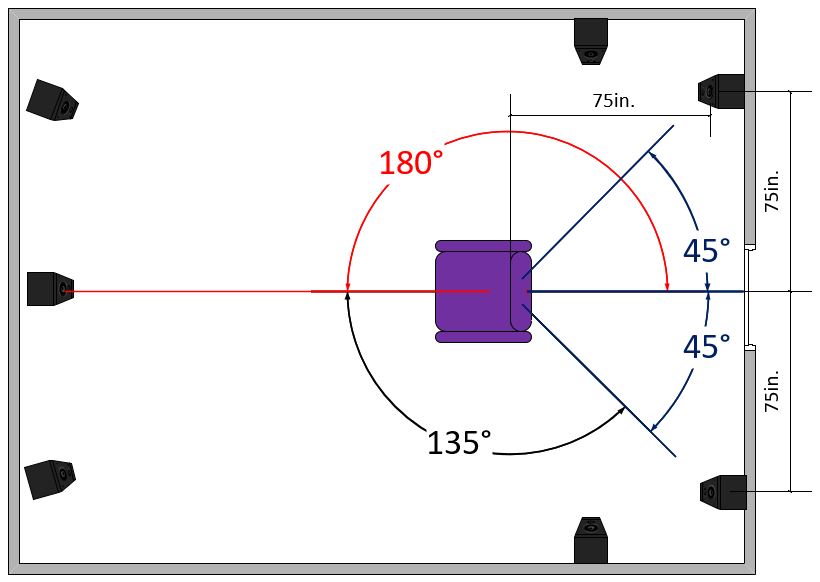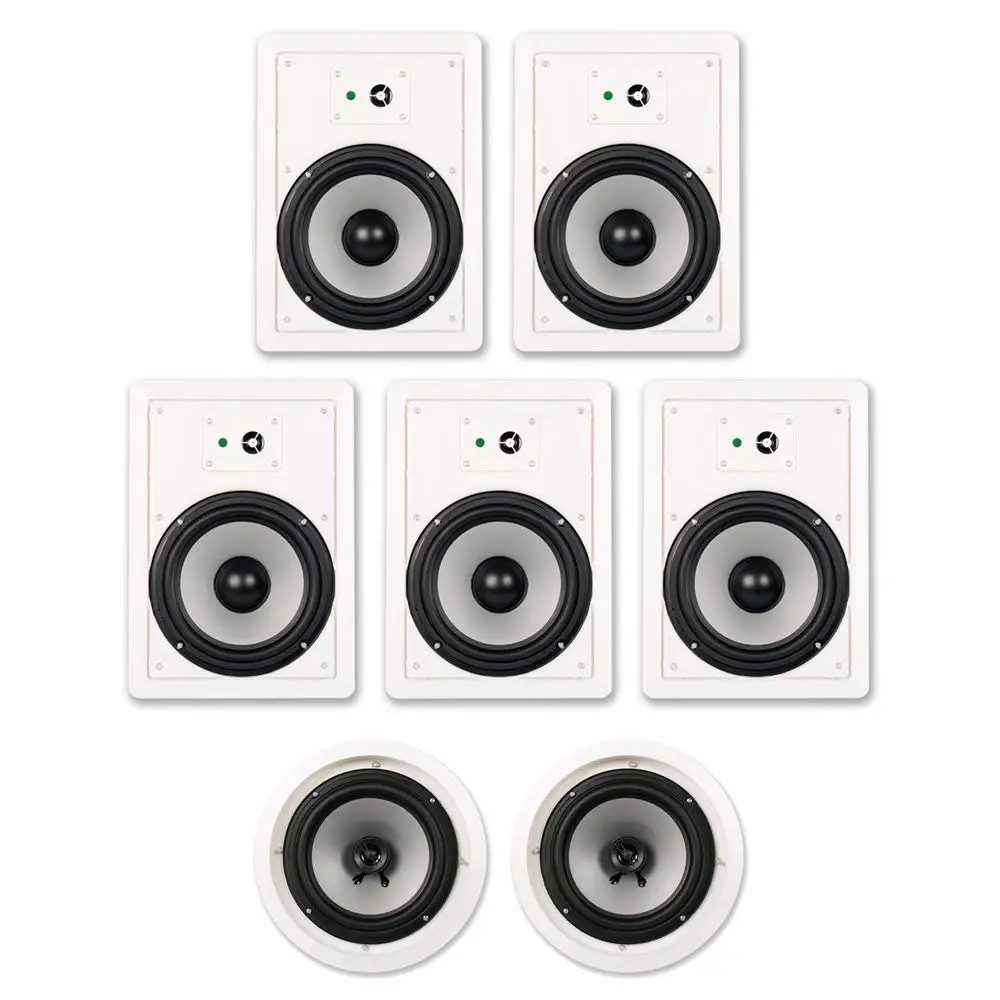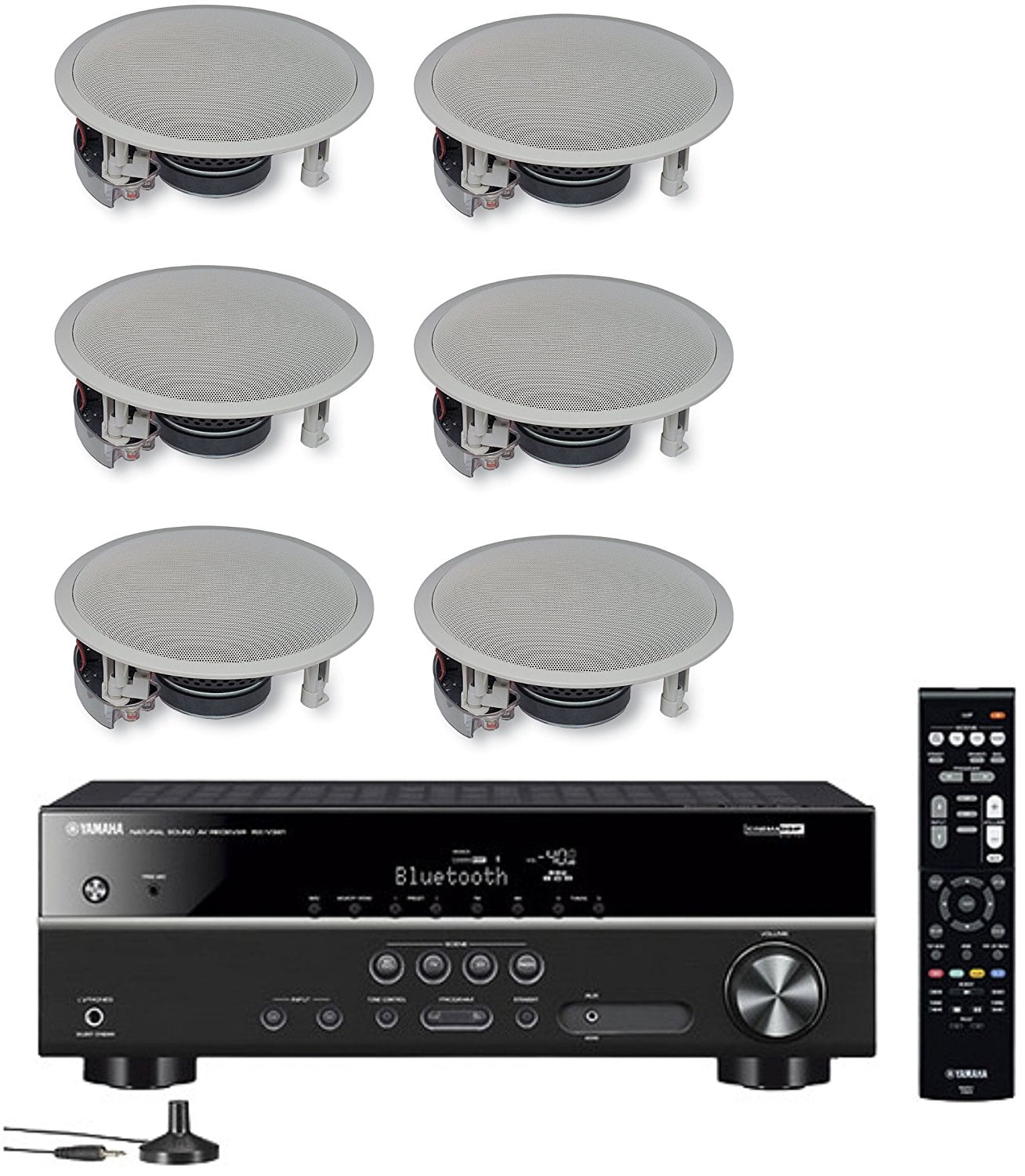Table of Content
Don’t forget to wear eye protection when cutting into the ceiling. This gives you a chance to measure the locations and ensure each spot is equally spaced around the room. Creates a great “all over” sound profile by adding direct overhead sound. Do not limit the amount of recessed lighting that can be installed. However, this arrangement may need a different speaker configuration or stand-alone adapters to ensure the two systems pair together.

A pilot hole lets you explore the space behind the wall to make sure there isn’t anything surprising there. It's important that you use speaker wire that's approved for in-wall runs. A pair of well-placed speakers fills small rooms with pleasing background music. We’ll give you some tips on where to place your speakers.
Home Theater Speaker Layout - An Essential Guide
Cut along the line with a drywall saw to carve the cutout. Cutting into drywall and plaster creates a fair amount of dust. Cover any furniture near your installation before you begin your work. It’s helpful to have someone hold the vacuum hose under the drywall saw as you cut. This eliminates a lot of the dust clouds that are generated during installation.
One of the biggest benefits of floor-standing speakers is they can be manually adjusted to better suit your listening needs. Great for audio systems that need high-profile installation. You should also avoid obstacles in the path of the sound wave. You will never get good sound if the furniture, objects, or the TV itself blocks the sound path to your ears.
What surround sound configurations work best with ceiling-mounted speakers?
Center channel speaker buying guide Your center channel speaker is arguably the most important speaker in your surround sound system. The answer depends entirely on the layout of your room and how much space you have. Generally speaking you'll get the best sound if you place the left and right speakers as far apart from each other as they are from you .
Others have written extensive articles detailing every possible way to configure a room full of speakers. Rather than go down that path, I will simplify things a bit to make it more palatable for the masses. In this system, since we have no rear speakers or Atmos overheads, we like to see the surrounds placed about a foot in front of your head and about 6 feet off the floor. Or, you could go with an in-ceiling speaker just in front of the main seats.
Preparing for the installation
Each reproduces the left and right portion of a stereo recording, so even if you're directly under one of the speakers and can't hear the other you'll still enjoy the track's full stereo mix. Reinforce where the speaker is mounted with a large piece of plywood above the foam panel. Mount it to the cross braces, and then cut the speaker opening into both the plywood and the drop ceiling. If your house has plaster-and-lath walls or ceilings, installing your speakers will be more complicated. Plaster tends to crack and crumble easily, so you should be prepared to do some touch-up work. If there might be power lines behind the wall near your pilot hole, wrap the exploratory wire with electrical tape.
It is a good idea to consider buying a powered subwoofer than the passive one so that subwoofer has it own power to produce good sound. We think having two overhead speakers are best, one left and one right-sounding ceiling speaker. It is up to your preference for how many subwoofers you want in your home entertainment system, and how many ceiling speakers you have in the optimal position.
Step 5. Snake the Wires.
This affects the subwoofer placement in the room, making its importance less critical than previous speakers. This is not bad because they are often not the most petite sizes. The main task of a subwoofer is to reproduce low-frequency bass sounds. Unfortunately, these sounds do not propagate like high-frequency sound waves, making their source more difficult to identify in a room. Many people like the ‘toeing-in’ effect for the speakers.

When considering a subwoofer for your home theater or listening room, there are a lot of factors to consider. We are often asked about the difference between sealed and ported subwoofers, and which they should choose for their room. One of the best ways to house your gear is in a commercial-like equipment rack.
The following are the guidelines that you must follow to get the best out of your sound system. Basically 30° foreword and in line with the mains, as long as the ceiling is high enough, like 8-9'. For lower ceilings I’d bring em in a bit otherwise the phantom image could collapse. If you’re using them for .2 Atmos tops, they should go roughly a couple feet in front of the LP. Maybe directly above where your feet are sitting down and stretched out. For more heavy-duty applications and exposure to extreme weather, you can look at the specs in specialty marine grade speakers.

But there are huge differences in loudspeaker placement when you compare home theater speaker placement against a movie theater. For one, home theaters tend to be more reflective in their acoustical properties. A movie theater is designed to be almost completely “dead”. Nearly all of the sound you hear in a theater is coming from the speakers.

No comments:
Post a Comment